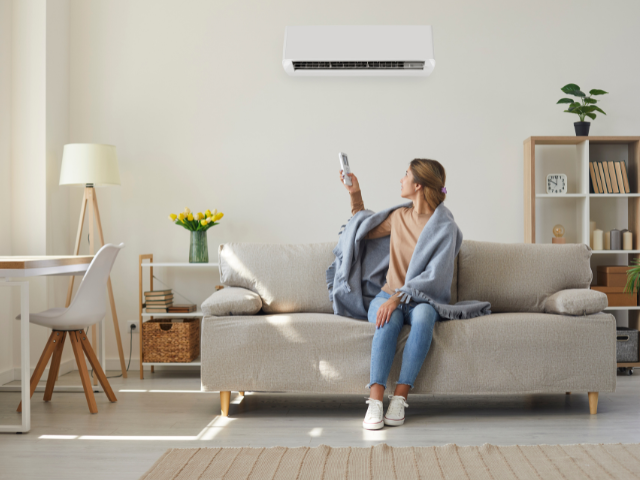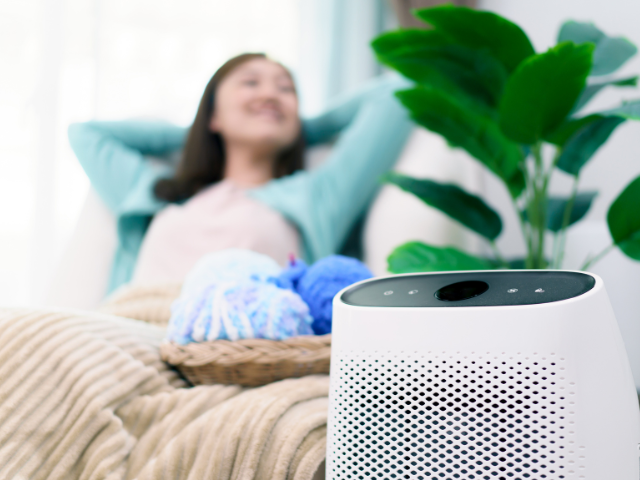Table of Contents
Winter air reduces ventilation as homes are sealed against the cold, trapping indoor pollutants like dust, mold, and allergens. Heating systems can also dry out the air, worsening respiratory issues and overall air quality.
Key Takeaways:
- Sealed homes reduce fresh air flow.
- Pollutants accumulate indoors.
- Dry air irritates respiratory systems.
- Heating systems may worsen air quality.
As winter settles in, cozy indoor spaces become our refuge from the biting cold. However, the season also brings hidden challenges that can affect your well-being. The effects of poor indoor air in winter often go unnoticed but can lead to respiratory issues, dry skin, and even increased exposure to allergens. With sealed windows and constant heating, the air inside your home can become stale and polluted. Let’s uncover how winter air impacts your indoor air quality and ways to protect your health.
Why Indoor Air Quality Declines During Winter
Winter creates unique challenges for maintaining clean indoor air. The primary factors contributing to poor indoor air quality during the colder months include:
- Reduced Ventilation
During winter, homes are often sealed tightly to retain heat and conserve energy. This lack of fresh air circulation can trap indoor pollutants like dust, pet dander, and cooking fumes, leading to stale and polluted air. According to the EPA’s guide to indoor air quality, poor ventilation is one of the leading contributors to unhealthy indoor environments during colder seasons.
- Increased Use of Heating Systems
Central heating systems can circulate dust and allergens throughout your home. Additionally, certain heating sources, such as gas or wood-burning stoves, may release combustion byproducts like carbon monoxide and nitrogen dioxide, further degrading air quality. - Lower Humidity Levels Cold outdoor air combined with indoor heating results in lower humidity levels. Dry air can irritate respiratory systems, exacerbate allergies, and increase the spread of airborne viruses.
Common Pollutants in Winter Air
The enclosed environment of winter homes creates the perfect conditions for a range of indoor air pollutants. Key offenders include:
- Dust and Allergens Accumulated dust and pet dander are more prominent when ventilation is limited. These particles can trigger allergies and asthma.
- Mold and Mildew While humidity levels are generally lower in winter, condensation around windows or poorly ventilated areas can lead to mold growth, releasing spores into the air.
- Volatile Organic Compounds (VOCs) Cleaning supplies, paints, and even new furniture release VOCs. When homes are sealed tight, these compounds build up and contribute to respiratory irritation.
- Carbon Monoxide Poorly maintained heating systems or blocked vents can release carbon monoxide, a dangerous gas that is odorless and potentially fatal.
The Role of Humidity in Winter Air Quality
Balancing humidity levels during winter is critical for maintaining good indoor air quality. The ideal indoor humidity level ranges between 30% and 50%. Here’s how humidity affects your home and health:
- Dry Air and Its Effects Low humidity can dry out nasal passages and skin, making individuals more susceptible to colds and respiratory infections. Dry air can also lead to cracks in wooden furniture and floors.
- Condensation and Mold Risk Areas with excessive humidity, such as around windows or poorly ventilated bathrooms, can experience condensation. This moisture promotes mold and mildew growth, which can aggravate respiratory problems.
- Energy Efficiency and Comfort Proper humidity levels can improve the efficiency of your heating system by reducing heat loss through dry air, making your home feel warmer and more comfortable without raising the thermostat.
How to Combat Poor Indoor Air Quality in Winter

Improving indoor air quality during the winter months requires a proactive approach. Here are some effective strategies:
1. Ensure Proper Ventilation
- Crack a window open occasionally to allow fresh air to circulate, even on cold days.
- Use exhaust fans in kitchens and bathrooms to reduce moisture and odors.
- Consider installing a mechanical ventilation system with heat recovery to improve airflow without significant heat loss.
2. Use an Air Purifier
- Invest in a high-quality air purifier with a HEPA filter to remove dust, allergens, and other pollutants.
- Consumer Reports offers in-depth reviews of HEPA air purifiers to help you choose the most effective model for your home.
- Position the air purifier in frequently used rooms for maximum effectiveness.
3. Maintain Your HVAC System
- Regularly replace HVAC filters to prevent the recirculation of dust and pollutants.
- Schedule annual HVAC maintenance to ensure your system is running efficiently and not contributing to poor air quality.
- Regularly schedule professional air duct cleaning services to remove accumulated dust, debris, and allergens that could circulate throughout your home.
4. Control Humidity Levels
- Use a humidifier to add moisture to the air if humidity drops below 30%.
- Monitor humidity levels with a hygrometer to prevent excess moisture that could encourage mold growth.
5. Minimize Pollutant Sources
- Avoid using harsh chemical cleaners and opt for natural alternatives.
- Store paints, varnishes, and other VOC-emitting products in well-ventilated areas.
- Ensure proper ventilation when using fireplaces, and have chimneys inspected annually.
Health Impacts of Poor Winter Air Quality
Prolonged exposure to poor indoor air quality can have serious health consequences. Some of the most common issues include:
- Respiratory Problems Individuals with asthma or allergies may experience worsened symptoms due to dust, mold, and dry air.
- Increased Illness Spread Dry indoor air can facilitate the spread of viruses, such as the flu, increasing the risk of illness during winter.
- Chronic Conditions Long-term exposure to pollutants like carbon monoxide or VOCs can lead to chronic respiratory and cardiovascular conditions.
Simple Practices for a Healthier Home
Adopting everyday habits can make a significant difference in improving your indoor air quality during winter:
- Vacuum regularly using a vacuum with a HEPA filter.
- Wash bedding, curtains, and other fabrics frequently to reduce dust mites.
- Open curtains during the day to let sunlight in, which can naturally reduce mold growth.
- Place indoor plants known for their air-purifying properties, like peace lilies or spider plants, in your living space.
Schedule a professional indoor air quality solution, such as duct cleaning or air purifier installation, to effectively reduce pollutants and allergens in your home.

Conclusion
Winter can take a toll on your indoor air quality, but with proactive measures, you can create a healthier home environment. From managing humidity levels to maintaining your HVAC system, these steps ensure cleaner air and improved comfort. At HVAC Alliance Expert, we specialize in comprehensive HVAC services to help you combat winter’s challenges, including air duct cleaning, system maintenance, and indoor air quality solutions. Don’t let poor air quality affect your well-being this season. Contact us today to learn how our expert services can keep your home warm, safe, and pollutant-free all winter long.
FAQs
During winter, homes are sealed tightly to retain heat, limiting ventilation and trapping pollutants like dust and allergens. Additionally, heating systems can circulate these contaminants, leading to stale and polluted air.
Low humidity can dry out your nasal passages and skin, making you more susceptible to respiratory infections. It also increases the spread of airborne viruses like the flu.
The recommended humidity range is between 30% and 50%. Maintaining this level helps prevent dry air issues and reduces the risk of mold growth from excessive moisture.
Use a HEPA air purifier, ensure proper ventilation, and regularly clean HVAC filters and air ducts. Managing humidity levels with a humidifier and limiting VOC-emitting products also helps.
Over time, dust, allergens, and debris accumulate in ducts, which can circulate throughout your home when the heating system runs. Cleaning ducts improves air quality and ensures efficient HVAC operation.


